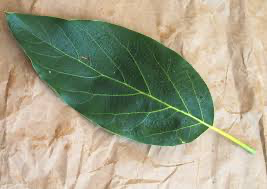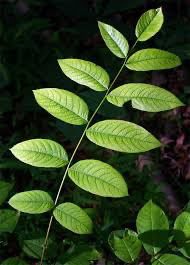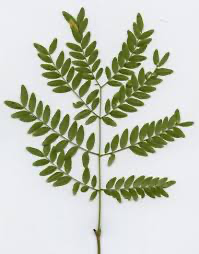Plants
1/131
There's no tags or description
Looks like no tags are added yet.
Name | Mastery | Learn | Test | Matching | Spaced |
|---|
No study sessions yet.
132 Terms
What limits plants
availability of phosphorus, nitrogen, and nutrients from the soil
Plant evolution
ordorcian time period-475 million years ago
derived from green algae
resembled moss, liverwarts, hornwarts
Plants
Multicellular
eurkaryotic
photosynthetic
use cellulose for carbohydrates
use chlorophyll
Bryophytes/non vascular plants
No vasular tissue
no roots, flowers, seeds, or fruit
needs water for reproduction using spores
Pteridiophytes/seedless vascular plants
Have vascular tissue
no seeds, no flowers, no fruit
needs water for reproduction using spores
leaf like
Gymnosperms
Have pollen
Have seeds which are cones
no flowers
use the wind for pollenation
Angiosperms
First to have fruits and flowers
90% of plants today
have seeds and pollen
eudicots
2 seed leaves
4 or 5 flower parts
netlike leaf veins
vascular bundles arranged as a ring
monocots
1 seed leaf
3 flower parts
paralel leaf veins
vascular bundles distributed randomly in ground tissue
Dermal Tissue
Outside of plant body
consists of the epidermis, parenchyma cells, trichomes, periderm, cork and cork cambium, and lenticels
Ground Tissue
most of interior
Vascular Tissue
pipes for delivering water and other nutrients
xylem and phloem
Plant Morphology
roots
stems
leaves
flowers
Shoot system
organ system above ground
Root System
organ system below ground
Roots
Anchor plants to the ground
absorb water and nutrients
conduct water and nutrients to shoot system
storage of photosynthate as starch
Fibrous Roots
Monocots
no central root
Tap Roots
Eudicots
centralized
lateral roots branch off
Modified Roots
Storage roots and Adventitious roots
Storage Roots
underground plant organs that store nutrients like starch, water, vitamins, and minerals
Adventitious Roots
plant roots that form from any nonroot tissue
Shoots
Support
Photosynthesis
Transport
Storage
Reproduction
Terminal buds
top of main shoot or branch
axillary buds
base of leaves can become branches
vegetative shoots
photosynthesis
reproductive shoots
reproduction with flowers
Modified Stems
Stolons
Rhizomes
Tubers
Stolons
Above ground
asexual reproduction
Rhizomes
Horizontal
below ground
Asexual Reproduction
Tubers
Storage
Leaf Veins
have vascular tissue
xylem for water and nutrients
phloem for photosynthesis
Cuticle
Waxy hydrophobic lipid
protects leaf from drying out and acts as a protective barrier
Palisade Parenchyma
Photosynthesize
Stomata
Allows passive movement of water throughout the plant.
2 guard cells create pores that allow for gas exchange of CO2 in and O2 and H2O out
Spongy Parenchyma
Allow air to circulate and do photosynthesis
Chollenchyma
supportive elastic cells
found in petioles and supporting central veins
Simple Leaves
1 blade

Compound Leaves
Leaflets

Double compound leaves
leaflets have leaflets

Modified leaves
tendrils
spines
succulent leaves
brightly colored
carnivory
Tendrils
help plants climb, grow, and compete for sunlight and space
Spines
protection
Succulent leaves
store water
brightly colored leaves
attract pollinators
carnivory
eat bugs to get nitrogen in nitrogen limited environments
Ground tissue
made of parenchyma
chollenchyma
and sclerenchyma
Parenchyma
All purpose
1 primary cell wall
divides and differentiates
Chollenchyma
thick wall
supports
flexible
1 primary cell wall
Sclerenchyma
Thick secondary walls
supports non growing sections
dead at maturity
Fiber cells
Sclereids
Tracheids
Long and Slender
water flows up and over
dead at maturity
vessel elements
barrel shaped
allow vertical flow
increased flow
dead at maturity
angiosperms only
Xylem fibers
non-living cells that support and strengthen xylem
Sieve tube members
Alive
has cytoplasm
no nuclei or organelles
companion cells
Alive
assist sieve tubes
has nucleus
only in angiosperms
Phloem Fibers
support for vascular tissue
made of sclerenchyma and dead at maturity
improves the strength of vascular tissue
what makes up wood
xylem
Parts of dermis tissue
Epidermis
Periderm
Epidermis
Primary dermal tissue, found in young parts of a plant
parenchyma cells
trichomes
guard cells
Trichomes
Hairlike extensions of epidermis, protects plants from predation, reduce evaporation
guard cells
form stomata and controls opening and closing them
Periderm
Secondary dermal tissue
cork and cork cambiam
Cork and Cork cambium
hardened protection in woody plants
Cork
Bark
Cork Cambium
Makes cork
lenticels
pores for gas exchange through outer cork and periderm, like stomata
Apical Meristems
create primary growth using cell division, the elongation of roots and shoots, plant embryoiotic cells that stay with them into maturity
located in axillary and terminal buds and root tips
Lateral Meristems
Create secondary growth by dividing cells in circular sheets throughout shoots and roots
in woody plants
increase circumferencf
allows plants to support themselves as they grow
Root apical meristem
makes root cap ahead of the meristem
makes primary vascular, grounds, and dermal cells behind meristem
cell division
replicate the meristem, make primary cells behind an root caps ahead
elongation
cell expansion creates force driving movement through soil
maturation
cells take on functional roles as vascular, ground or dermal tissue
stele
new primary vascular root cells
cortex
new primary ground root cells
protoderm
new primary dermal root cells epidermis
Root hair structure and function
extensions off root epidermal cells
increases root surface area
function to absorb water and nutrients from soil
shoot primary growth
at apical meristem, terminal or axillary bud
make 1st dermal, ground, and vascular shoot cells behind the meristem, build and adds length
perpetuate/replicates the meristem and leaves behind axillary bud meristem
lateral meristems
create cell division that increases girth/ circumference to support primary growth overtime
woody plants
make secondary tissue to make secondary growth
Vascular cambium
stem cells that form a cylinder in the shoot inbetween primary xylem and primary phloem in vascular bundles
makes secondary xylem to the inside and secondary phloem to the outside
cork cambium
makes secondary dermal tissue/ cork to outside
Vascular bundles
xylem and phloem in long tubes
indeterminate growth
roots and shoots
determinate growth
leaves
flowers
fruits
hypertonic
plasmolyed
isotonic
flaccid
hypotonic
turgid and preferred
water pressure
0 if the container is open
solute
0 if the water is pure
hydrogen bonds
make cohesions
water molecules
adhere to cellulose cell walls
casparian strip
made of wax/lipid
hydrophobic
forces water and nutrients to pass across at least 1 plasma membrane
permeable for ions
Apoplastic flow
through the cell wall cellulose
symplastic flow
through the cytoplasm and plasmodesmata
forced across membrane by casparian strip
what regulates the closing and opening of stomata
sunlight
adaptations in dry environments
stomata in protected pockets
trichomes decrease evaporation and create humid microenvirnments
Source
adds sugars to phloem and uses ATP
mature leaf, starchy storage root that releases sugars
Sink
Removes sugar from phloem, passive
anything that needs to grow
what makes soil acidic
roots
what has the greatest affect on plant growth
nitrogen
nitrogen fixing bacteria
only organisms that can break nitrogen’s triple bond
turns it into 2 ammonias
nitrifying bacteria
turns ammonium into nitrate which is preferred by plants